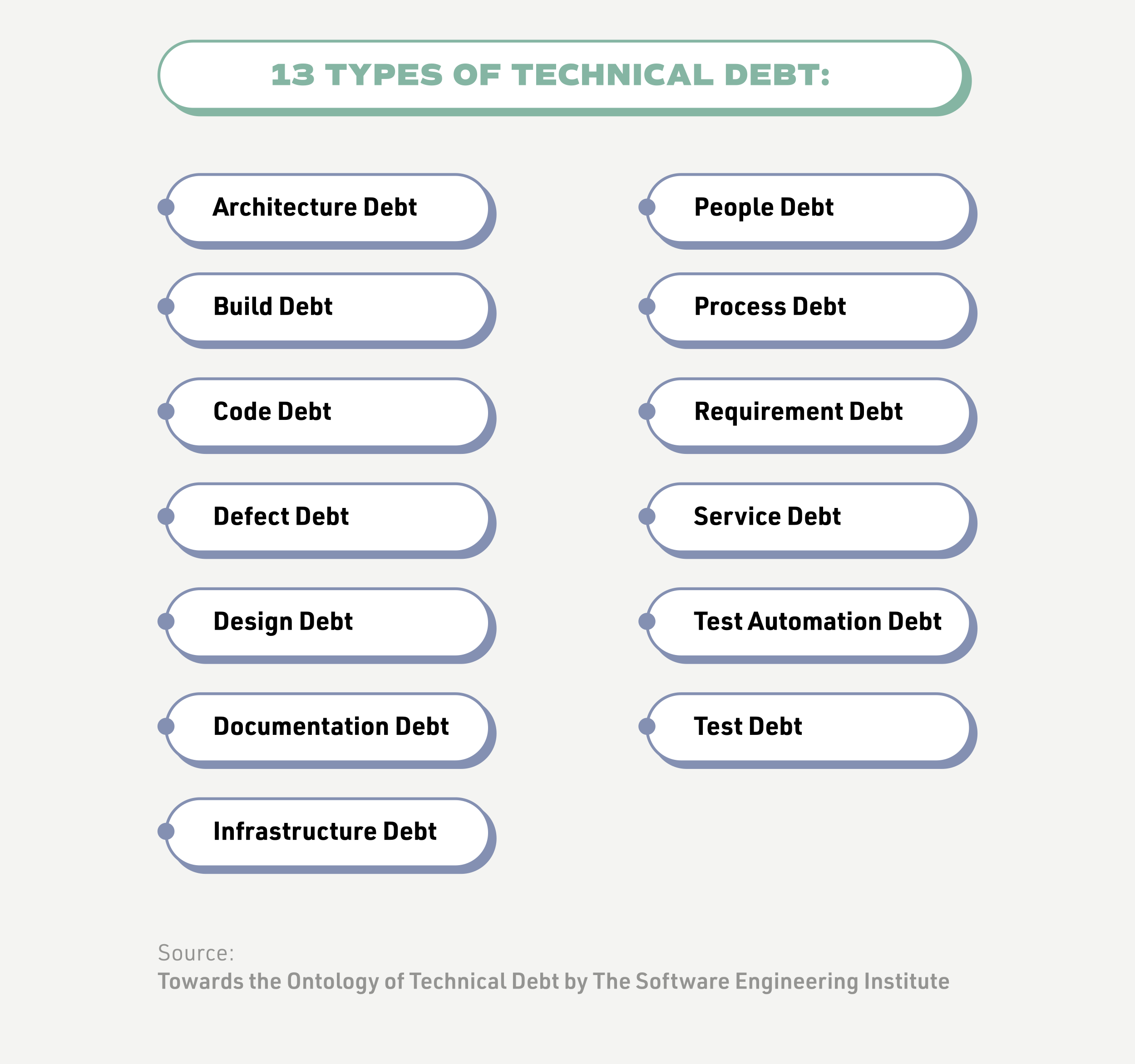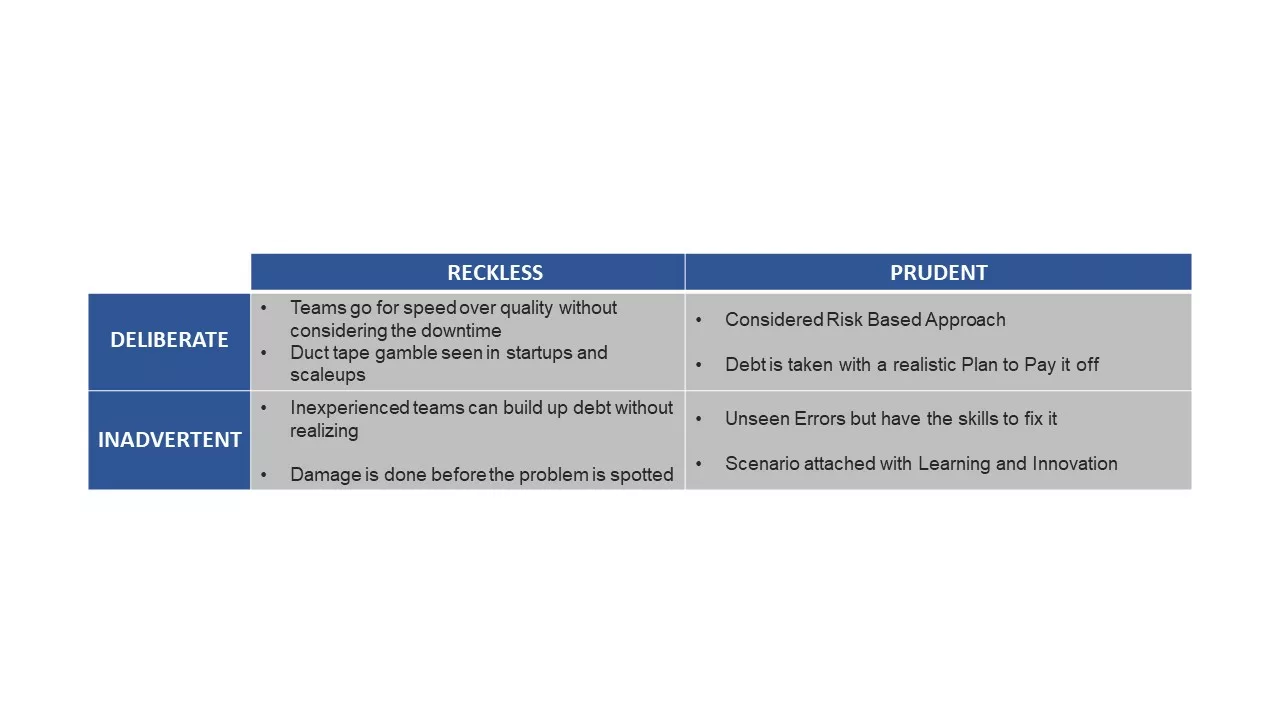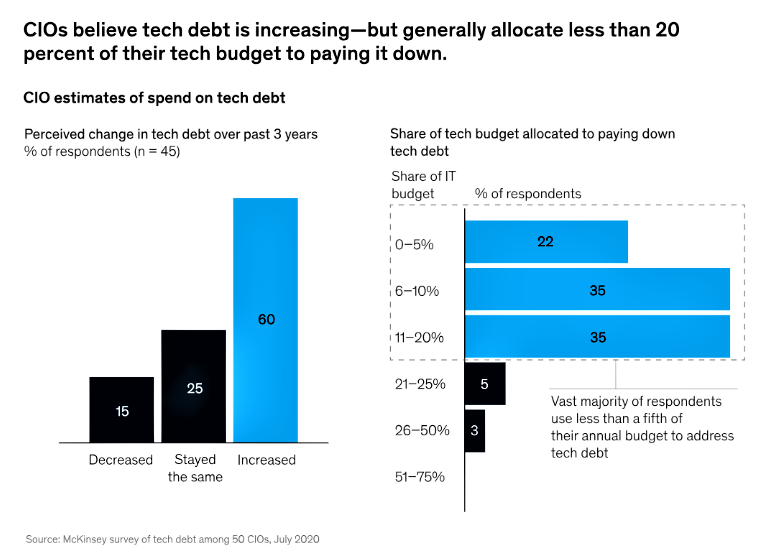Contents
Introduction
Ever been in a race against to meet a crucial deadline in your software development journey? We’ve all been there – striving to deliver results promptly, sometimes making those quick code shortcuts to get the job done. But here’s the catch: it’s called “Technical Debt.” It’s like borrowing time from the future. You save time now, but there’s interest to pay later – in the form of increased complexity, database maintenance loads, and compromised quality.
Don’t worry if you’ve never heard of this hidden concept before. We’re here to unravel this journey of trade-offs, shortcuts, and the consequences that follow. Imagine taking a loan where the terms aren’t financial, but they’re about the quality and sustainability of your codebase. Join us together to unfold this untold concept with us.
What is Technical Debt
Software development uses a concept of “technical debt” to describe the effects of choosing a swift, easy solution over an intricate one. Increased complexity, difficult maintenance, and diminished effectiveness may result from this. Consider a company that, in order to meet a deadline, implements an interim solution rather than entirely optimizing their programming. It might initially function, but as time passes, it gathers “interest,” which makes upgrading or fixing it more challenging. An ecosystem for software that is healthy and sustainable must address technical debt.
In software projects, technical debt is a critical issue that entails a
structured strategy to assure existence and maintainability. Detailed code reviews, static analysis tools, and a framework that classifies it into “architectural debt, design debt or code debt” are all part of the process.
Refer the following Video for deeper Understanding
Types and Kinds of Technical Debt

Martin Fowler, a leading software expert, classifies technical debt into four kinds, as shown in the quadrant below.

How To Identify, Track and Measure
Tasks are added to project management software like Jira or Trello to track technical debt, and “debt points” are given to each issue to indicate how severe it is. Prioritizing tasks depends on the development and product teams working together.
Regular debt point assessments determine the viability of the project and ensure efficient resource allocation. Analyzing debt accumulation and resolution patterns, figuring out the debt ratio, and keeping track of technical debt are all part of the measurement. The database is regularly reviewed and adjusted to help with decision-making and to direct the distribution of development aids.
Software projects with significant technical debt must carefully evaluate their codebase and development procedures. Open communication, frequent code reviews, and the use of automated tools like static code analyzers can all help achieve this. Regular code updates can disclose critical problems, but coding standard violations, poor documentation, and out-of-date modules can point to a lack of quality. It’s also a good idea to involve the development team in identifying recurrent problems and usability issues.
Metrics approach plays a crucial role identifying Technical Debt which include response times and error rates to assist identify places where performance may be impacted by technical debt. Architectural assessments can assist in coordinating system design with long-term objectives, and “debt discovery” sessions can assist in identifying hidden debt.
Causes
Deadlines: Striving to meet aggressive deadlines can foster technical shortcuts, disregarding comprehensive architectural planning and thorough testing.
Documentation Deficiency: Insufficient documentation impedes code comprehension, hindering future modifications and maintenance efforts.
Testing Inadequacy: Insufficient testing coverage begets latent defects that accumulate and compound over time.
Scope Expansion: Expanding project scope without corresponding structural adjustments introduces intricacy, escalating technical debt.
Technology Obsolescence: Integrating outdated frameworks and libraries hampers adaptability and escalates maintenance obligations.
Ad Hoc Remediation: Addressing immediate concerns via impromptu solutions disregards holistic system implications.
Refactoring Neglect: Postponing code refactoring escalates technical intricacies, hampering future iterations.
Skill Novitiate: Inexperienced developers might inadvertently bypass best practices, sowing seeds for enduring complexities.
Dynamic Requirements: Frequent requirement changes culminate in patchwork implementations, amplifying long-term intricacies.
Communication Gaps: Suboptimal collaboration results in divergent coding paradigms and misaligned architectural choices.
Impact
As the debt compounds, systems become harder to maintain, leading to frequent bugs, slower updates, and increased costs. This restricts agility and competitiveness, making it difficult to respond to market changes quickly. Over time, technical debt can hinder new features, create customer dissatisfaction, and necessitate substantial resources to rectify. Addressing technical debt promptly is crucial to maintaining a healthy and productive development environment.

How To Tackle/Handle
A thorough strategy is required to manage and reduce technical debt in software development successfully. In order to do this, the codebase must be thoroughly examined, with regions with poor architecture, inefficient processes, or complex structures being identified and ranked according to how they affect functionality, performance, and user experience. Refactoring is essential, trying to improve readability and maintainability without changing the code’s behaviour outside. Technical debt can be avoided by using automated tests and test-driven development techniques. Frequent code changes made possible by the combination of Continuous Integration and Continuous Deployment pipelines enable the early detection and elimination of technical debt. With a specific backlog for correcting technical debt, documentation is crucial. The use of tools and automation can aid in locating potential areas of technical debt and speed up small steps. Training makes coding more accurate, re-creating best practices, empowering developers to create cleaner, more maintainable code.
Conclusion
A scenario that goes unnoticed but needs to be addressed is technical debt. Remember that proactive solutions, teamwork, and constant progress are the keys to conquering it as we peel back the layers of this conception. Accept high-quality code, encourage teamwork, and put sustainability first. By doing this, you sidestep the problems of technical debt and create a solid platform for success and creativity.
If you are stuck with issues like this in your software, Sparity will be your helping hand for all your software development, maintenance, and support services.
Join us for all your digital transformation needs.




